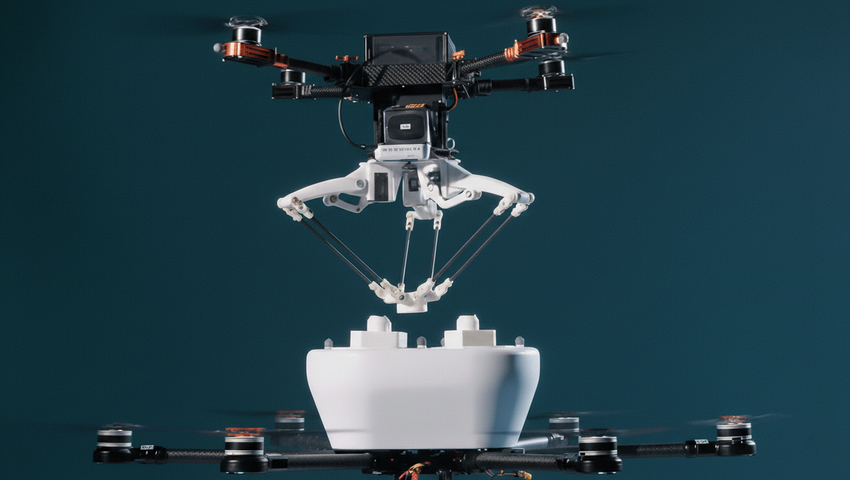
UAVs master high-precision tasks mid-air
Researchers at Westlake University in China have developed the FlyingToolbox system, enabling micro-aerial vehicles (MAVs) to exchange tools mid-flight with sub-centimeter accuracy – despite fierce airflow interference. The innovation promises to completely transform hazardous tasks like high-rise maintenance, disaster response, and industrial construction, where human access is risky or impossible.
Flying drones in close formation has long been thwarted by "downwash" – the powerful downward airflow from propellers. When one drone hovers directly above another, speeds can exceed 13 meters per second, generating forces up to 25 newtons (40% of a drone's weight). This turbulence has historically limited docking precision to 6-8 cm in similar systems, making mid-air tool swaps unreliable.
FlyingToolbox shatters these barriers. The system pairs two specialized MAVs: a lower "toolbox" drone carrying multiple tools on elastic tethers and an upper "manipulator" drone with a robotic arm. Inspired by a surgical team – where a nurse hands tools to a doctor – the setup allows uninterrupted workflow in the skies.
At the heart of the system lies a neural network-based estimator that predicts and compensates for downwash disturbances in real time. Using QR code visual tracking, the drones achieve precise alignment even in turbulent air conditions. Docking is secured by electromagnetic connectors with elastic tethers, which absorb alignment errors and ensure reliable tool transfer.
During extensive testing, the system achieved a docking accuracy of 0.80 ± 0.33 cm, even under downwash speeds of up to 13.18 m/s. The FlyingToolbox successfully completed 20 consecutive docking trials, maintaining accuracy and repeatability throughout. This represents a major improvement over previous aerial docking systems.
Experiments ranged from stationary tool swaps to dynamic sequences with moving toolbox drones. Multi-stage tasks simulated real-world scenarios, like sequential repairs, with 100% success. The system's robustness shone in hovering formations, where drones divided labor like a coordinated aerial workforce.
Although the experiments were conducted in controlled lab conditions, researchers believe the technology can be adapted for real-world environments, enabling drones to perform autonomous refueling, tool swapping, or material delivery during flight. Such advancements could transform how drones are used in industrial maintenance, construction, and disaster response, allowing multiple drones to operate cooperatively as an aerial workforce capable of performing complex, coordinated missions.
The Westlake University team continues to enhance the FlyingToolbox system. Future upgrades target multi-tool compatibility, enhanced robotic arms with more degrees of freedom, and wind-resistant algorithms.
Projects like FlyingToolbox and AI development platform for UAVs by QuData reflect a broader movement in modern robotics – the shift toward adaptive, multifunctional systems that can seamlessly adjust to varying conditions and mission requirements. This evolution is redefining automation by merging precision engineering, intelligent control, and real-time decision-making to deliver greater efficiency and resilience across industries.
QuData engineers are advancing navigation and coordination technologies for GPS-denied environments, ensuring that drones remain operational even where satellite signals are lost – such as in disaster zones, urban canyons, or underground areas. These systems play a vital role in emergency response, infrastructure monitoring, and aerial support missions, where reliable autonomy and situational awareness can make a critical difference. Together, such developments expand the frontiers of what autonomous aerial robotics can achieve in real-world conditions.
